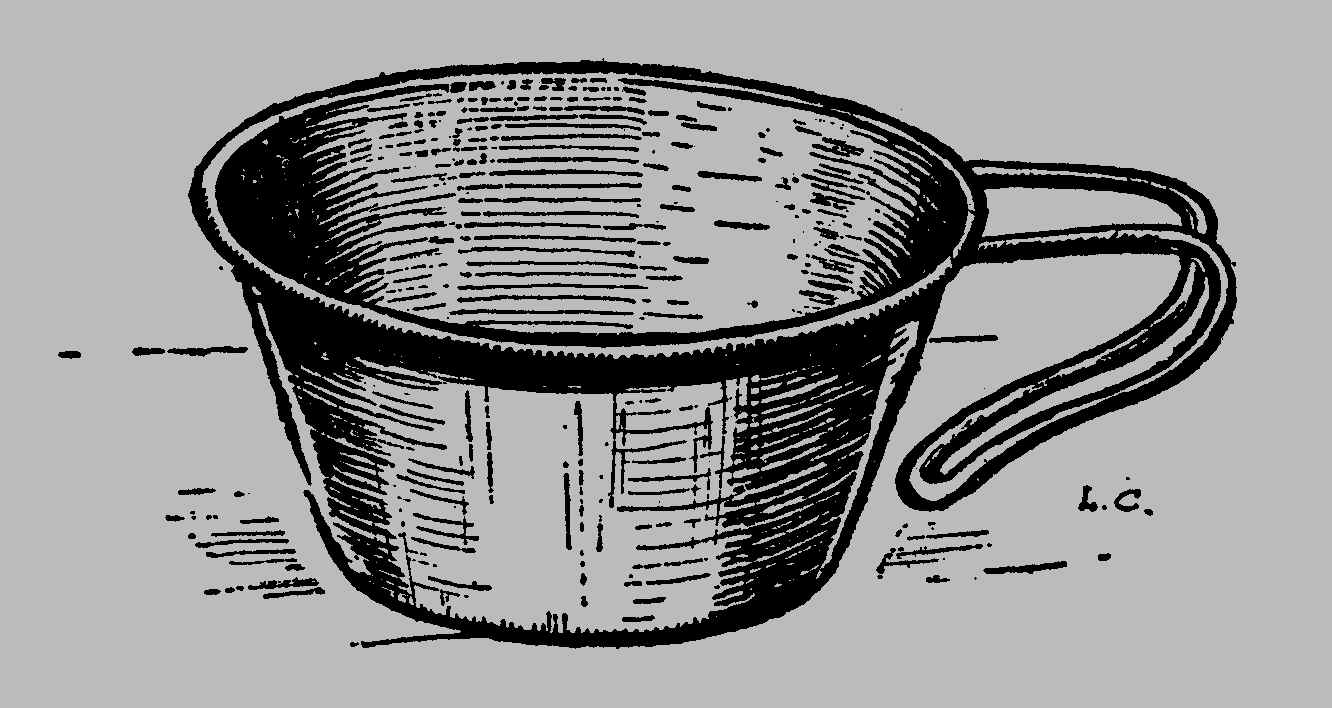
The Sierra Club Cup

Sierra Club Cups
by BLANCHE STALLINGS
Sierra Club Bulletin 1940
If I had to be a cup, and wanted a delightful, varied, interesting, and useful career, I think I'd say, "Make me neat and smooth, out of tin, stamp these words on me, 'Sierra Club of California,' and hang me on the belt of a good mountaineer." Bright, little Sierra Club cups!
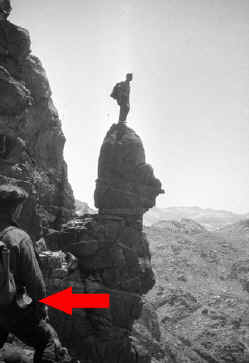
Palisades 1931
Over the mountains they go, dipping pure, sparkling water for thirsty high-trippers. They dip from streams - streams over trails, streams over granite, streams in forests, streams in meadows, white streams cascading down from the blue sky, clear streams bubbling up from the ground.
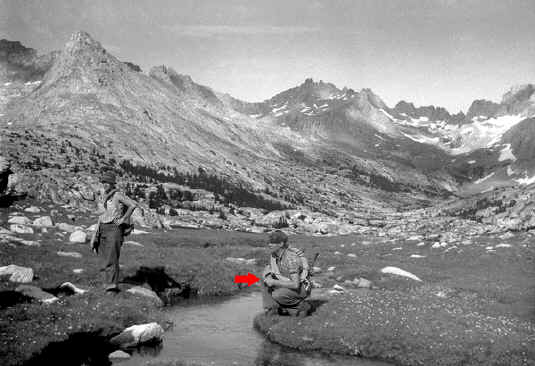
High Trip 1929
They dip from lakes - blue, wind-ruffled lakes, quiet, reflecting lakes, green-blue, half-frozen lakes, dark, silent, star-filled lakes. From streams and lakes, changing and changeless in sunshine and shadow, cups of cold water.
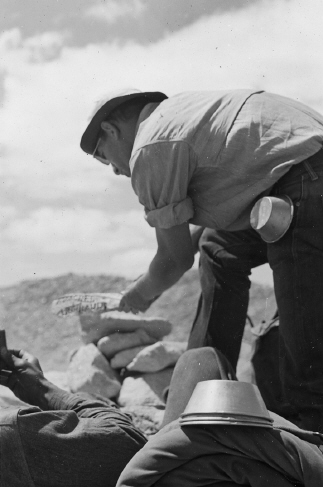
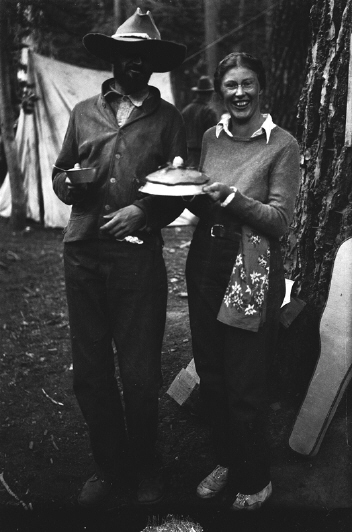
Ansel & Virginia, 1934
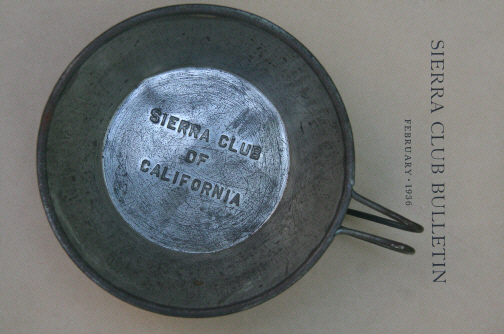
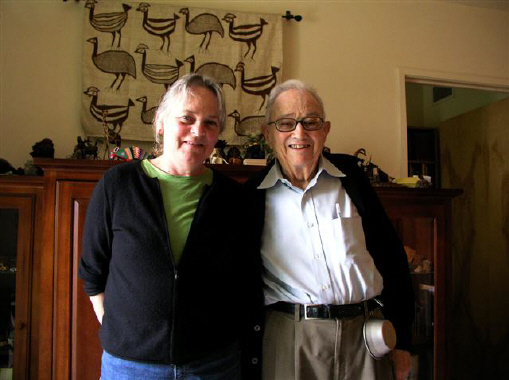
Here is Glen with my wife Agnes. Glen is sporting a unique cup, embossed
"Mount Ansel Adams"
from the dedication ceremony in 1985.
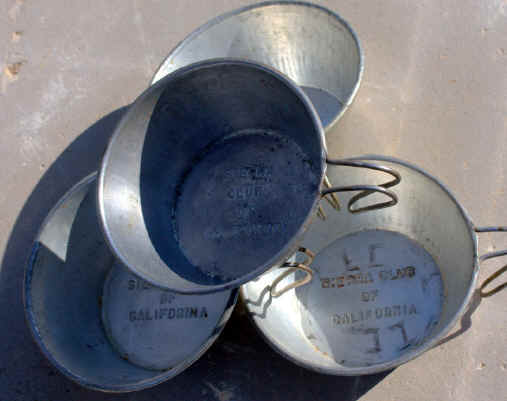
A wonderful contribution from Paul Smith of Colorado,
these cups belonged to Leland Curtis, the artist featured on these pages. Thanks!
Read from the March 2015 Sierra Magazine:
The cult of the Sierra Club cup, the sheer talismanic power of this little vessel, will baffle anyone who missed drinking from it in its heyday, the first three-quarters of the 20th century. I first burned my lips on its narrow metal rim (drinking hot cocoa) as a young boy in 1950. Full appreciation has come only in retrospect.
My father, David Brower, the first executive director of the Sierra Club, was loyal to the cup, and to all things Sierra Club. At home in Berkeley, California, we ate our cereal and soup out of them, resorting to bowls only when we had dinner guests. I assumed this was normal.
But it was in the mountains that I learned the cup's real value. If the Sierra Club cup is ideal for anything, it is dipping in a stream to drink. We could do this in any Western mountain range in those days, the era before giardia. Snowmelt is the best water in the world, of course, and as a boy I tried to sample every stream. I was nearly grown before it occurred to me to drink directly from the current, like a wolf, but that felt oddly unnatural. I tried it once or twice and quickly reverted to my cup.
John McPhee, in Encounters with the Archdruid, his 1971 book about my father, allows my old man to make his entrance, then immediately introduces the cup: "Brower for seventeen years had been the executive director of the Sierra Club,its leader, its principal strategist, its preeminent fang. In the mountains, a Sierra Club mountaineer eats and drinks everything out of his Sierra Club cup, and in various wildernesses with Brower I had never seen him eat or drink from anything else. In the past, in the High Sierra, he had on occasion rubbed pennyroyal-mint leaves over the embossed letters in the bottom of his cup and added snow and whiskey for a kind of high-altitude julep."
McPhee goes on to note, bemused, that in the Glacier Peak Wilderness, on the particular night he describes, everything, noodles, beef, chocolate pudding, was eaten from the cups. What other way do people eat in the mountains? I wondered. It was my first inkling that Easterners might do things differently at altitude.
In middle age, a father now myself, I flew by bush plane into the wilderness of Alaska's Wrangell-St. Elias National Park, on an assignment for National Geographic. We were backpacking into a region seldom visited. Our guide, an Everest climber who knew the country, specified at the end of the equipment list he sent: Do not bring a Sierra Club cup. I bristled at this. At our first camp, when I debated him on it, he pointed out that the cup is not insulated. It burns your lips and tongue. And by the same principle that scalds the tongue, instantaneous heat transfer, the cup quickly turns hot food cold. It's an awful little cup.
I knew all this, in a subliminal way, though I would never have put it so brutally.
But it misses the point. Communion goblets are not insulated either. Nor is the chalice in which wine is transmuted into the blood of Christ. For some of us, wild country really is like religion. For others, me, for example, it is religion, for we have been instructed in no other kind.
John Muir, founder of the Sierra Club, was one of those who found the notion of a creator problematic, but creation, he had verified its hard granite under his boots. He wrote often of the mountains as cathedral.
The awful little cup dates back to 1905, a time when Muir was fighting to keep Hetch Hetchy Dam out of Yosemite. In the High Sierra, this silver vessel comes up brimming with cold, pure water transmuted from snow just minutes before. You drink an essence of wilderness, the place where life on Earth was born.